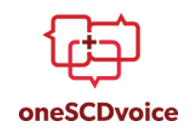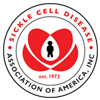Trusted Resources: Evidence & Education
Scientific literature and patient education texts
N-acetylcysteine in Patients with Sickle Cell Disease: A Randomized Controlled Trial
source: American Society of Hematology
year: 2016
authors: Joep W.R. Sins, Karin Fijnvandraat, Anita W. Rijneveld, Martine B. Boom, Jean-Louis Kerkhoffs, Alfred H. van Meurs, Marco R De Groot, Harriet Heijboer, Marie-Françoise Dresse, Alina Ferster, Philippe Hermans, Anna Vanderfaeillie, Eric W Van Den Neste, Fleur Samantha Benghiat, Jo Howard, Rachel Kesse-Adu, Andre Delannoy, Andre Efira, Marie-Agnes Azerad, Corianne A.J.M. de Borgie, Bart J. Biemond
summary/abstract:Patients with sickle cell disease (SCD) suffer from frequent and severe episodes of pain that are associated with hospitalizations, impaired quality of life and increased mortality. Current treatment options are scarce. Oxidative stress appears to play a pivotal role in the pathophysiology of SCD. Pilot studies have demonstrated that administration of the antioxidant N-acetylcysteine (NAC) effectively reduces markers of oxidative stress in SCD and may decrease the hospitalization rate for painful crises. NAC is a safe, inexpensive and well-tolerated drug that has been used for years for various indications. The primary aim of this study was to evaluate the effect of NAC on the frequency of daily pain in patients with SCD.
We conducted a randomized (1:1), double-blind, placebo-controlled, parallel-group trial at 11 sites across The Netherlands, Belgium and the United Kingdom. Patients were eligible for participation if they were >=12 years of age, had either HbSS, HbSC, HbSβ⁰- or HbSβ⁺-thalassemia with a history of at least 1 painful crisis per year over the 3 years prior to enrolment. At randomization patients were assigned to receive either oral NAC 600 mg twice daily or placebo for a total duration of 6 months. Patients had monthly checkups during the study. The primary endpoint was the rate of SCD related pain days per patient year, assessed daily with the use of pain diaries. Secondary endpoints included the rate of days with painful crises, admission days, hospitalizations and days with home analgesic use, the severity of pain, the time to first painful crisis and hospitalization, the number of adverse events and the effect on quality of life and various blood markers. The primary intention-to-treat analysis of this study was limited to patients with a minimal completed diary observation time of 110 days. Sensitivity analyses were done in both all randomized patients as well as a subset with >=80 days of observation time. Lastly, an additional per protocol analysis was performed on patients with adequate adherence (>=80% of tablets used) and >=110 days of completed diary observation time.
organization: Academic Medical Center, Amsterdam; Emma Children's Hospital, Amsterdam; Haga Hospital, The Hague; University of Groningen; CHR La Citadelle, Liège; Children's University Hospital Reine Fabiola, Brussels; CHU St Pierre, Brussels; Cliniques Universitaires Saint-Luc, Brussels; Hôpital Erasme, Brussels; Guy's and St. Thomas' NHS Foundation Trust, London; Hopital de Jolimont, Haine Saint Paul; CHU Brugmann, Brusselsread more
Related Content
-
Acetylon Presents Preclinical Data Demonstrating the Utility of Selective HDAC1,2 Inhibition by ACY-957 to Induce Ga...Acetylon Pharmaceuticals, Inc., the lead...
-
Crizanlizumab 5.0 mg/kg increased the time to first on-treatment sickle cell pain crisis (SCPC) and the likelihood o...Background: In the 52-week SUSTAIN stud...
-
Physician Prescribing Practices in Sickle Cell DiseaseSickle cell disease (SCD) affects approx...
-
Safety and early hints of benefit seen in phase 1b trial of PF-04447943Sickle cell disease (SCD) patients were ...
-
Using CRISPR Cas9 to cure sickle cell diseasehttps://www.youtube.com/watch?v=WdkP-RU5...
-
Ironwood Pharmaceuticals Announces FDA Orphan Drug Designation for Olinciguat for the Treatment of Sickle Cell Disea...Ironwood Pharmaceuticals, Inc., a commer...
-
Manage Your Sickle Cell Disease Symptomshttps://www.onescdvoice.com/wp-content/u...
To improve your experience on this site, we use cookies. This includes cookies essential for the basic functioning of our website, cookies for analytics purposes, and cookies enabling us to personalize site content. By clicking on 'Accept' or any content on this site, you agree that cookies can be placed. You may adjust your browser's cookie settings to suit your preferences. More Information
The cookie settings on this website are set to "allow cookies" to give you the best browsing experience possible. If you continue to use this website without changing your cookie settings or you click "Accept" below then you are consenting to this.




 +myBinder
+myBinder
